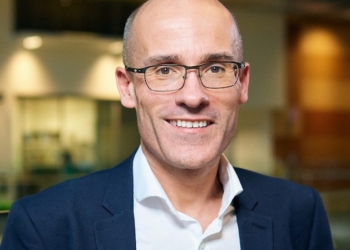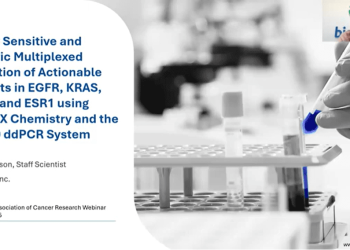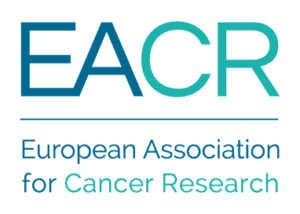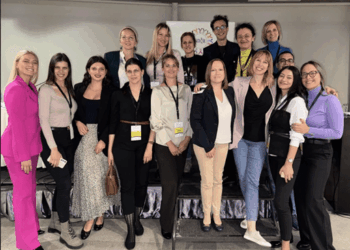 Dr. Alexandra Boitor, EACR Scientific Officer, gives a few of the scientific highlights from the EACR Conference Persister Cells: from Bacteria to Cancer (Lyon, 18-20 March 2025).
Dr. Alexandra Boitor, EACR Scientific Officer, gives a few of the scientific highlights from the EACR Conference Persister Cells: from Bacteria to Cancer (Lyon, 18-20 March 2025).
The burgeoning field of persister cells has rapidly expanded since its inception 13 years ago, revealing the involvement of persister cells across various cancer types and treatment modalities. Unlike resistant cells, which harbour genetic alterations enabling survival despite therapy, persister cells exhibit transient drug tolerance through reversible, non-mutational mechanisms [1].
On 18 – 20 March 2025, the EACR opened this year’s in-person conference series with a meeting in Lyon focused on Persister Cells: from Bacteria to Cancer. Featuring an exceptional international faculty with speakers from some of the biggest research institutes in Europe, the US, Australia, China and Singapore, the conference covered the latest exciting breakthroughs in multiple aspects of persister cell biology from antibiotic to chemo- and immune-therapy resistance including insights into the genetic and epigenetic mechanisms that control cell plasticity, in addition to genomic, cell metabolism and cell signaling aspects of the persister state.
The first session of the conference focused on novel methodologies for studying persister cells and featured talks looking at the evolutionary dynamics of antibiotic persistence (Jan Michiels, VIB-KU Leuven Center for Microbiology, Belgium), immune evasion (Shensi Shen, West China Hospital, P.R. China), persister cell memory (Yaara Oren, Tel Aviv University, Israel) and tissue-level interactions (Direna Alonso-Curbelo, IRB Barcelona, Spain).
The second day of the conference debuted with talks looking at the molecular mechanisms involved in driving and maintaining the persister state from bacteria to a range of human cancers, including melanoma, breast cancer, lung cancer and glioblastoma.
Susan Rosenberg (Baylor College of Medicine, USA) talked about ‘Drugging Bacterial and Cancer Evolution’. In her talk, Dr Rosenberg drew from the expertise in the bacterial field to inform potential approaches for cancer treatment. Her research exploits the similarities in the mechanisms of action and treatment response between fluoroquinolone antibiotics and cytostatic drugs. Both drug categories work by inducing double-strand DNA breaks, and in both cases, a subset of cells become unresponsive to treatment due to cells developing stress-induced mutations in their DNA repair mechanisms. Dr Rosenberg proposes combining drugs to slow mutagenesis with certain antibiotic/ cytostatic treatments to improve the efficacy of those treatments [2-4]. During the Q&A session, the potential applicability of this approach for different types of cancer and therapeutic approaches was further evaluated.

Further on, Aaron Hata (Massachusetts General Hospital, USA) discussed the ‘Mechanisms driving evolution of drug resistance in lung cancer’ bringing the spotlight to apolipoprotein B messenger RNA editing catalytic polypeptide-like cytidine deaminase 3A (APOBEC3A) [5]. Trever Bivona (UCSF, USA) further expanded on the clinical potential of APOBEC3A later on during the conference [6].
As part of this session Jukka Westermarck (University of Turku and Åbo Akademi University, Finland) also presented his research looking at the connection between the awakening of drug-tolerant persisters and HER2i tolerance and Lenka Munoz (University of Sydney, Australia) explored the role of histone methyltransferases in the survival of drug-tolerant persister cells in glioblastoma.
An additional compelling talk in this session was that of Céline Vallot (Institut Curie, France). In her talk, Dr Vallot focused on her efforts to identify ‘hallmarks of the persister state’. The Vallot lab looked at epigenetic and transcriptomic data from different patient models and treatment types in triple-negative breast cancer and identified activation of the stress response, inflammation (activation of interferon), changes to the cholesterol metabolism and upregulated basal keratins as indicative of the transcriptional plasticity characteristic to persister cells. Further digging into the molecular mechanisms Dr Vallot brought attention to the role of FOSL1 in driving the persister state [7]. Dr Vallot also brought into conversation the technological challenges in investigating epigenetic features in patient samples.
As part of this session, Chris Marine (VIB – KU Leuven Center for Cancer Biology, Belgium) gave the EMBO keynote lecture, in which he focused on the role of the tumour microenvironment in determining transcriptional heterogeneity in melanoma. Single-cell profiling and untargeted spatially resolved transcriptomics of treatment-naive and immune checkpoint blockade-treated metastatic melanoma revealed a transcriptional heterogeneity within the tumour that is independent of the genetic makeup of the cells and is determined by signals from the tumour microenvironment. Further research uncovered TCF4 as a ‘master regulator’ of several of these transcriptional programmes, including the mesenchymal-like state associated with driving tolerance and resistance to immune checkpoint blockade. Dr Marine’s research also suggests that targeting TCF4 has the potential to improve current treatment approaches [8].

Day two wrapped up exploring the emerging vulnerabilities of persister cells with the aim of identifying novel targeting strategies. The conversation covered from Genome-wide CRISPR screens (Ultan McDermott, AstraZeneca, UK and Johannes Zuber, IMP – Institute of Molecular Pathology, Austria) to oncogene addiction (Olivier Calvayrac, Centre de Recherches en Cancérologie de Toulouse, France), plasticity, therapy resistance and immune evasion (Eduard Batlle IRB Barcelona, Spain) from lung to colorectal cancer. Dr Battle focused his presentation on the role of persister cells in disease relapse and metastatic spread in colorectal cancer. His research looks into the dynamic changes in cell states within the residual disease and how they are influenced by the tumour microenvironment and implicates the WNT/stem cell gene program in the control of disease resurgence [9, 10].
The closing session brought attention to the translational potential of persister cell research. Wendy Mok (UConn Health, USA) examined ‘Targeting bacterial metabolism and defences to eradicate antibiotic persisters’ whilst Shruti Bhatt (National University of Singapore, Singapore), Isabel Puig (VHIO, Spain), Alessia Mira (University of Turin, Italy) and Trever Bivona (UCSF, USA) concentrated on persistence in different cancers: leukemia, colorectal cancer and lung cancer respectively. Caroline Robert’s talk (Gustave Roussy, France) zoomed in on the ‘Interactions of the Persister Cells with the tumor microenvironment’.
Cutting-edge research was also presented as part of the poster discussion. In addition to the exciting science, the conference also featured various networking opportunities, fostering collaboration and community-building in this pivotal rapidly growing area of research. In a departure from the usual format, the conference started with a networking activity. The Scientific Programme Committee, formed by Yaara Oren (Chair, Tel Aviv University, Israel), Ultan McDermott (AstraZeneca, UK), Caroline Robert (Gustave Roussy, France) and Mariangela Russo (University of Torino, Italy) prompted the audience to consider the key questions in the field and motivated attendees to identify their goal for the meeting. Other networking activities included the conference dinner and an early career advice session focused on managing the work-life balance where principal investigators present at the meeting shared their opinions rooted in their personal and professional experiences of their routes into scientific leadership.
EACR Conferences
At the EACR we are dedicated to providing excellent cancer research conferences where the latest research topics and interaction for participants are the very highest priorities. Make sure you add the dates of the upcoming EACR Conferences to your diary now. Don’t forget we offer member discounts on all of our registration fees!
References
- Russo, M., et al., Cancer drug-tolerant persister cells: from biological questions to clinical opportunities. Nature Reviews Cancer, 2024. 24(10): p. 694-717.
2. Fitzgerald, D.M., P.J. Hastings, and S.M. Rosenberg, Stress-Induced Mutagenesis: Implications in Cancer and Drug Resistance. Annual Review of Cancer Biology, 2017. 1(Volume 1, 2017): p. 119-140.
3. Zhai, Y., et al., Drugging evolution of antibiotic resistance at a regulatory network hub. Science Advances. 9(25): p. eadg0188.
4. Xu, L., et al., IRE1a silences dsRNA to prevent taxane-induced pyroptosis in triple-negative breast cancer. Cell, 2024. 187(25): p. 7248-7266.e34.
5. Isozaki, H., et al., Therapy-induced APOBEC3A drives evolution of persistent cancer cells. Nature, 2023. 620(7973): p. 393-401.
6. Caswell, D.R., et al., The role of APOBEC3B in lung tumor evolution and targeted cancer therapy resistance. Nature Genetics, 2024. 56(1): p. 60-73.
7. Baudre, L., et al., Identification of a shared persistence program in triple-negative breast cancer across treatments and patients. bioRxiv, 2025: p. 2025.03.17.643634.
8. Pozniak, J., et al., A TCF4-dependent gene regulatory network confers resistance to immunotherapy in melanoma. Cell, 2024. 187(1): p. 166-183.e25.
9. Cañellas-Socias, A., et al., Metastatic recurrence in colorectal cancer arises from residual EMP1(+) cells. Nature, 2022. 611(7936): p. 603-613.
10. Álvarez-Varela, A., et al., Mex3a marks drug-tolerant persister colorectal cancer cells that mediate relapse after chemotherapy. Nature Cancer, 2022. 3(9): p. 1052-1070.


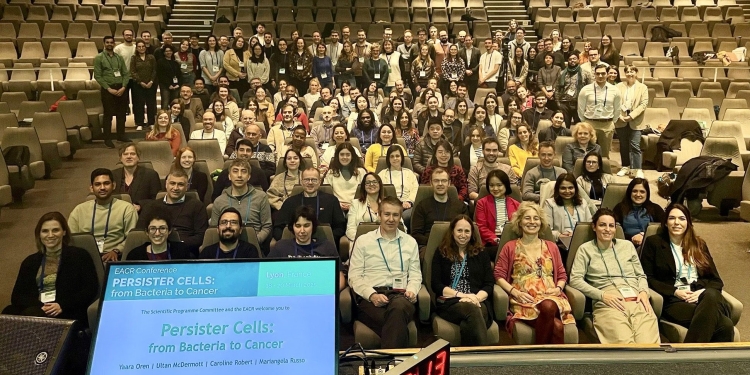
 Dr. Alexandra Boitor, EACR Scientific Officer, gives a few of the scientific highlights from the EACR Conference Persister Cells: from Bacteria to Cancer (Lyon, 18-20 March 2025).
Dr. Alexandra Boitor, EACR Scientific Officer, gives a few of the scientific highlights from the EACR Conference Persister Cells: from Bacteria to Cancer (Lyon, 18-20 March 2025).